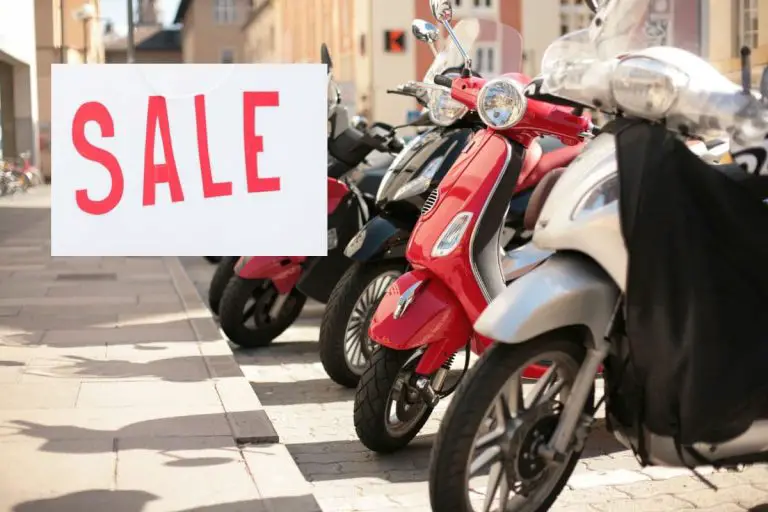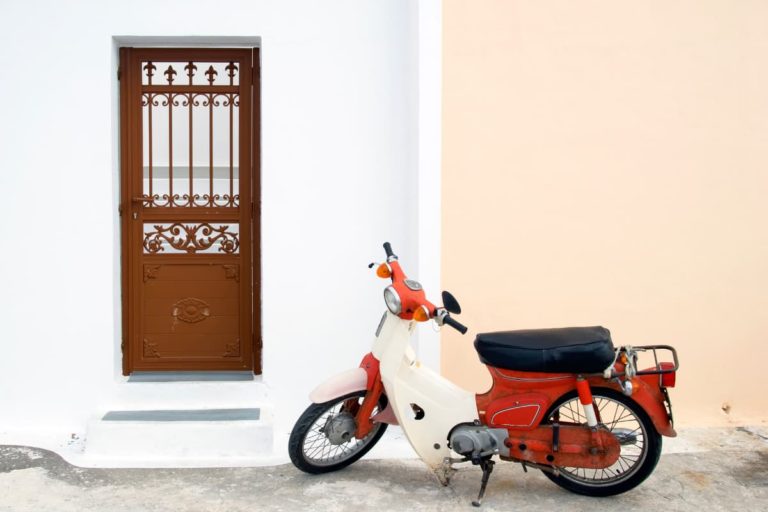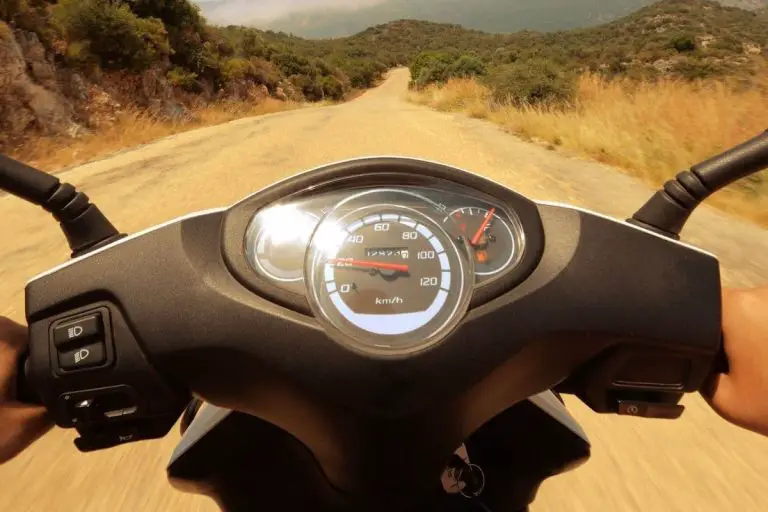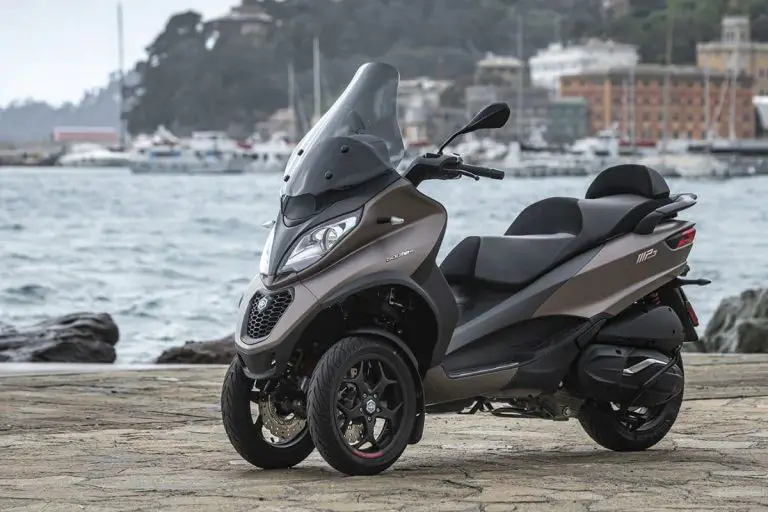Choosing a scooter can be easy, fun, and yet somehow overwhelming. The wide range of choices aren’t quite as plentiful or as easy to shop for like you would a car even though they are a form of transportation. That was hard for me to wrap my head around yet it was also hard to pick the right beginner scooter. So what is the bets scooter for beginners?
That said, choosing a scooter is a very important one for beginners as it can determine how comfortable and easy your scooting journey will be.
Key Takeaways
The best scooters for beginners (based on engine size needs):
- 50cc: Genuine Urbano 50i
- 125-200cc: Honda ADV 150
- 200cc+: Yamaha XMAX 300
Choosing the right scooter determines how enjoyable riding the scooter will be, so read on for the details on these scooters.
Read a more in depth scooter buying guide if you need more feature details, but let’s dive into some steps to choosing the best scooter for beginners.
1. Think About How You Plan to Ride
As a beginner, you need to spend some time thinking about how you’ll use the scooter. To know which motor scooter to look at, I find it helpful to know which engine size range to explore. That does narrow down choices and features pretty quickly.
Here are some questions to ask yourself to get a good understanding of what you need.
* Do you plan to commute on your scooter? (storage considerations)
* What is the maximum speed that drivers tend to drive on that route? (influences engine size needs)
* Do you have big hills? (another engine size factor)
* Are you taller (or shorter or heavier) than an average male or female?
* How often do you plan to ride? Can you see yourself riding the hottest days of summer or coldest days of winter?
Then you’ll need to translate your needs to how much power you need out of the scooter.
Electric Scooters 411
If you’re also looking to buy an electric scooter, you need to think about how far your rides will be. They do not have the same range as a scooter that can just be filled up with gas on the open road. Also, their storage space is limited as their power source is under the seat where other scooters have storage. You can add a rack & top boxes, but the factory ready storage is not the same on an electric scooter vs their gas scooter counterparts.
2. How Much Power Do You Need?
Use your answers to help guide the right sized (and type) of engine. Again, look here if you need to know how those questions translate to a scooter size and type.
At a high level, a scooters engine size is measured in a cubic centimeter (cc) of displacement. This is the measure of the gas (fuel) and air mixture that is used by the motor to propel the scooter forward. The larger the cc number, the higher the speed with which your scooter can move.
The engine size needs to match the roads you plan to ride, safely.
For example, if you want to go into scooter riding just for commuting on highways, then you should know to automatically take a 50cc engine scooter off the table completely. They tend to be restricted to 30 miles per hour (mph). Hills and added weight on the scooter bring those speeds down, too. A 50cc scooter just can’t compete against a 300cc more prepared for highway commutes.
Rule of thumb guidelines:
~50cc: speed limits ~30 mph, limited hills
~150cc: speed limits ~45 mph, moderate hills
~300cc+: highway speed limits & definitely more prepared for hills & larger riders
3. What is Your Budget?
Once you know your engine requirement, you’ll need to have a sense of what you can afford. Read here if you need to know more details about financing a scooter, but I always recommend buying a scooter outright if you have the option – particularly if this is a play toy.
Leave room in your budget for safety gear, as well. You can find helmet cost detail here.
Like every other vehicle used for transportation, scooters have models that range from the value model to the high-end ones.
The bigger the engine size of a scooter, the more expensive it is. However, there is a lot of overlap in engine sizes, so don’t let this stop you from getting the right sized scooter.
There is a wide variation in prices within each engine-sized category.
For example, a lance PCH 50 will cost about $1,600 while a Honda Metropolitan with a 50cc engine will cost about $2,500. A new Vespa will run you over $4,000. While you will find some differences between brands a models, they all ultimately have the same engine size and will most likely serve the same purpose and function in terms of speed.
This is where knowing what your budget helps as you will be able to choose which scooter you want to buy.
Read more detail on the price of scooters here, but in general, you can expect to spend the following at a scooter dealer with a warranty:
- $2,000 for a 50cc
- $2,999 for a 125-170cc
- $6,000 for a 200+cc
4. Features a New Scooter Rider May Appreciate
There are some features on a scooter that I feel will help beginner riders.
Have you ever been car shopping & just know that an automatic transmission is more expensive than a manual one. Modern scooters are automatic, so you won’t be adding cost here. However, the features discussed here aren’t uniform across scooters beyond that!
Better Braking Systems
Similar to what we have in cars, scooters also have ABS brakes. ABS means Anti-lock Braking System.
This system works by preventing the wheels of a scooter from locking up when you need to step on the brake hard and fast to prevent a road accident or stay out of trouble. This feature is a safety feature that is important to have on a scooter as a beginner.
This is a feature you will find on all 250cc+ scooters, but you will ONLY find it on a Vespa in the 50cc range. All other scooter brands with 125cc scooters or below do not offer ABS brakes & usually only the disc brakes instead of a disc and drum combo for better braking power.
There is also a CBS system that is a Continuous Braking System. If you take a Motorcycle Safety Foundation basic rider course, they teach you to apply the right and left brake (front & rear) evenly. The CBS system helps you do that.
So a scooter with ABS or CBS may be a better choice for a newer scooter rider to aid in braking.
Seat Height
If you’re new to riding, the seat height can play an important role into helping you feel more comfortable riding.
Think about it. If you’re a 5’4″ female, a lower seat height where you can firmly plant your feet on each side at a stop light just feels right.
If you’re a 6’5″ male, you’re not going to love the same scooter that the 5’4″ female loves necessarily, but there are plenty of both that you’ll see among the scooter crowd.
That said, you’ll see a wide variety of people riding a wide variety of scooters. The lowest seat height as it comes from the factory is 29″ whereas the highest seat height is 31″.
That doesn’t sound like a big range, but I know that my 5’6″ frame didn’t love the Lance Italia at 31″. I was in LOVE with that scooter, but I couldn’t buy it because the height made me super nervous. It’s how I choose the 29″ Genuine Buddy Kick. Now that I’m more experienced, I’ll hop on any, though!
Also know that you can lower a seat height in a couple of ways if you are just sold on a higher seat height.
One last thing is that it is also the seat width that will impact how you feel on the scooter.
Windscreen
Some scooters have windscreens which will help to shield the rider from wind and whatever particles that may be flying AT you when out and about. If you plan on longer rides, this is even more important as it reduces the resistance your body ‘fights’ by staying upright against wind.
As a new rider, I didn’t understand this, but if you’re commuting on short jaunts, this isn’t a deal breaker at all.
Electronic Fuel Injection
Electronic fuel injection is just how the scooter provides fuel to get it rolling. It does have give you better fuel efficiency, as well. A lot of folks look to scooters to safe money on gas, so get a little more fuel economy by opting for electronic fuel injection.
The most important thing to me was more in that it is easier to keep happy. Generally, scooters do not appreciate being parked for long periods of time. Dealing with a carburetor that sits up doesn’t sound good to me.
You have to take steps to winterize a scooter that will not be ridding for a period of time, and a carbureted one takes a little more or the problems will make you want to cry or pull your hair out.
Even in the winter if I’m not riding for weeks on end, all I do is open the garage, start my scooter up, maybe ride it around the block, and I don’t have issues with my fuel injection. Carburetors, as I understand it, are more finicky about this.
And then I have images of my dad rebuilding carburetors at our kitchen table as a kid. I chose electronic to keep things simple for myself as a beginner.
Lengthy Warranty
As a beginner, I had no idea about scooters, but they certainly don’t seem as advanced as cars necessarily. It made me wonder about their reliability.
On that same note, I hadn’t even heard of many of the brands that sell scooters.
A warranty will get you dealer support to get your scooter up and running if something goes wrong, so I highly recommend choosing a scooter with a great warranty.
When I was learning to ride, I didn’t necessarily want to learn to work on my scooter in the same window.
In the not-so-distant-past, there weren’t a ton of scooters offering anything but a 12 month warranty. The good news is that many scooters now offer a 24 month, unlimited miles warranty.
Only Honda, Suzuki, and Yamaha are stuck in the 12 month warranty mindset, but they are brands you’re likely to know in the US.
Let’s break down the best scooters for beginners by the engine size.
Best 50cc Scooter for Beginners
As a beginner, it’s common for a 50cc be the entry point whether for expense, licensing or hoping to stay safer on a smaller engine.
You can’t go wrong with a Vespa as it will have all of the bells and whistles that most mopeds won’t have. The Vespa Primavera has a 4-stroke, 50cc engine with electronic fuel injection which helps to optimize the performance of the engine and consumption of fuel. It has more features than most in this engine size, but it will cost you a hefty $4,000, too.
The Genuine Scooter Company’s Urbano 50i is the best 50cc scooter for beginners. It is a 4-stroke with electronic fuel injection, a charging port, roadside assistance, and many other features yet half the price of the Vespa alternative.
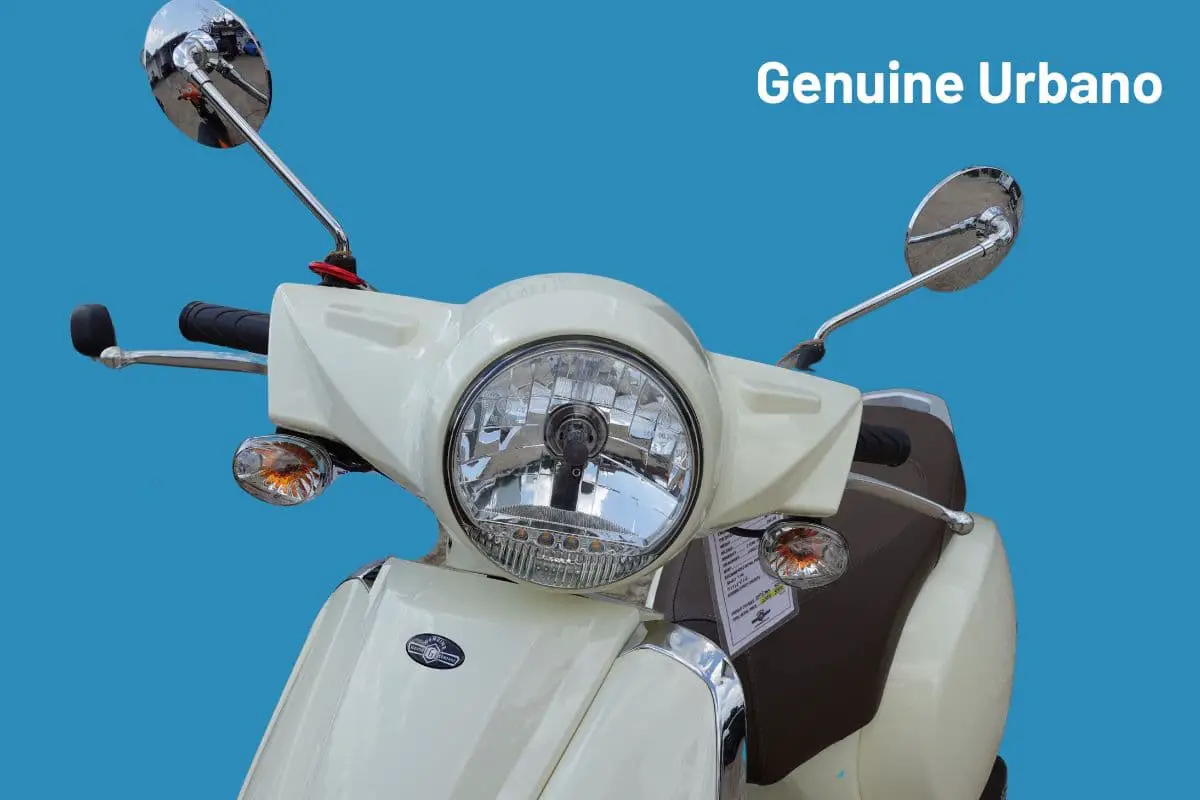
If your budget is limited or you like the best bang, I’d look to the Urbano at just under $2,000. The Urbano 50i features are very similar to the Vespa Primavera. Vespa is the iconic looking scooter, but the Urbano did a good job here with styling. What the Urbano does NOT have is the metal body and some slightly upgraded components that the Vespa does have.
Best 125cc-200cc Scooter for Beginners
Scooters that have engine sizes of 125cc-200cc are a bit more powerful than the 50cc scooter.
The best scooter for beginners in this range is the Honda ADV. It has a 149cc engine for a top speed of 63 mph with electronic fuel injection, ABS brakes and liquid cooled.
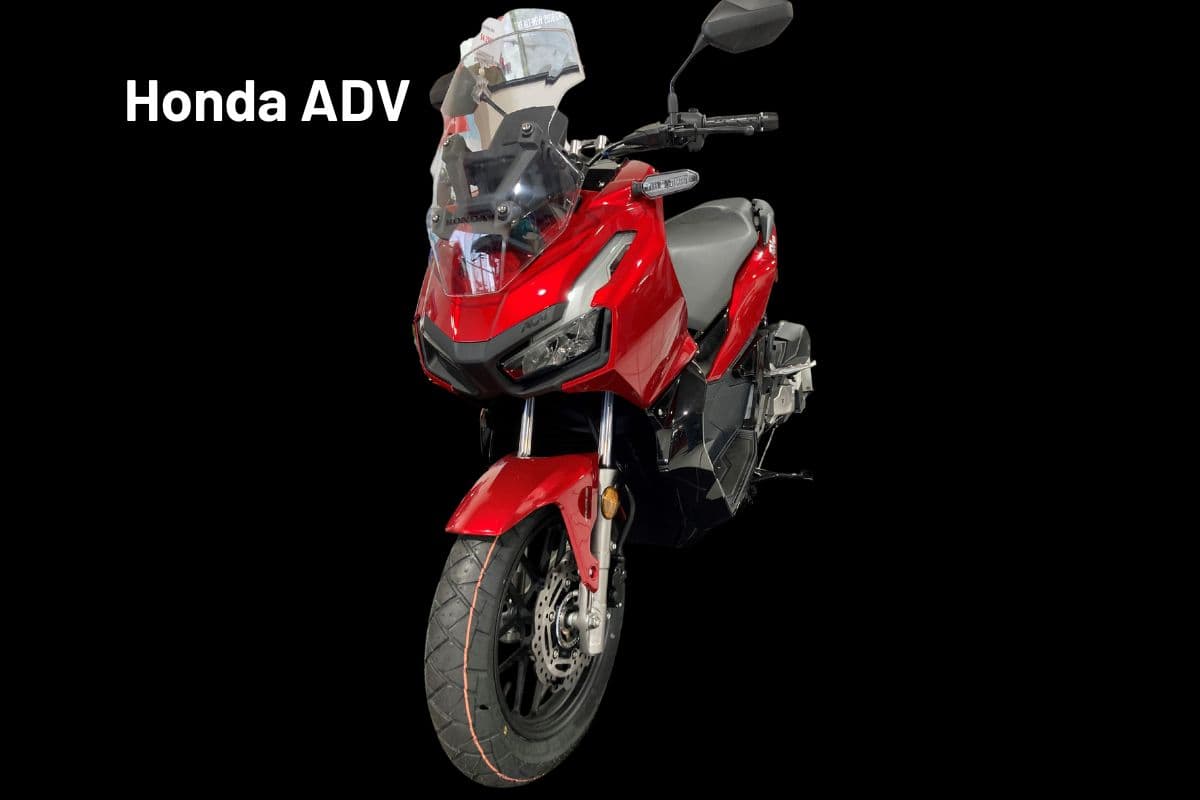
Each of those features make it easier for a beginner to go where they need to go from the ABS brakes to the fuel efficient 4-stroke, fuel injected system. The ADV also has the only liquid cooled engine in this class along with the largest tires. Larger tires usually translates to a smoother ride.
The ADV has an MSRP of $4,299, so if budget comes into play here, I’d recommend looking at the Lance Cabo, Cali or Havana 200i. They will cost just under $3k and have CBS instead of ABS, tires more in line with most other scooters, and air cooled over liquid cooled but at over $1k less.
The Lance has the 24 month warranty vs Honda’s 12 month warranty, though.
Best 300cc Scooter for Beginners
I know that as a beginner it freaked me out to have more power than I needed. Part of this was being budget/value conscious, but I also didn’t want to ‘mess up’ at higher speeds either.
Don’t do this to yourself! Get the scooter that will work for your riding plans + look cool. That’s why I ran through the power you need for the roads you plan to ride on. If that put you in this 300cc+ category, then so be it!
The good news is that once you reach this engine size, a lot of features great for beginners are available across all models. They all have the electronic fuel injection, liquid cooled engines, and disc brakes on the front and rear WITH ABS.
Most even have larger tires for a scooter other than the Vespa GTS.
So my recommendation comes down to value for the money to the features provided.
The best scooter for beginners with a larger engine size is the Yamaha XMAX for its features and value.
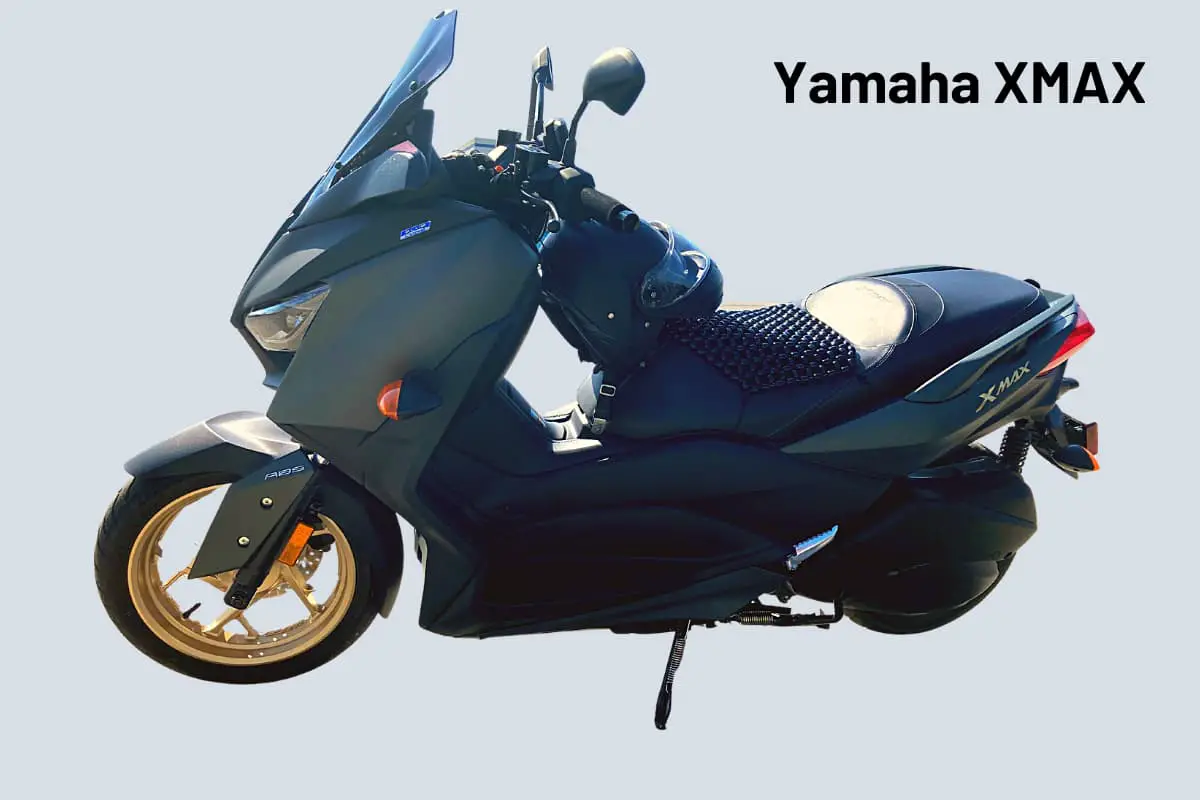
This scooter has all that you expect at this engine size range with an electronic fuel injection system coupled with the ABS braking system. It is designed with the comfort of the rider in mind and it has features (like the windscreen, seat height, etc.) that help beginners in riding while also being affordable in the 300cc ish line-up at just under $6k.
Key Takeaways
Shopping for a scooter is fun, and can be overwhelming but most dealers that I have visited so far have helped a lot and they have made the process easy. They tell you all you need to know about each scooter as well as its unique features.
That said, I’ve had to drive great distances to have these chats! Dealers aren’t all that plentiful, so do your homework before visiting one.
Even if you don’t have your motorcycle license yet, just sitting on a scooter will help you know if it ‘fits’ you well
Pay attention to the features that make it easier to ride or maintain like a height that works for you, electronic fuel injection, ABS or CBS brakes, a dealer supported warranty, and a 4-stroke for a bit more fuel efficiency.
And don’t forget gear to keep you safe!



